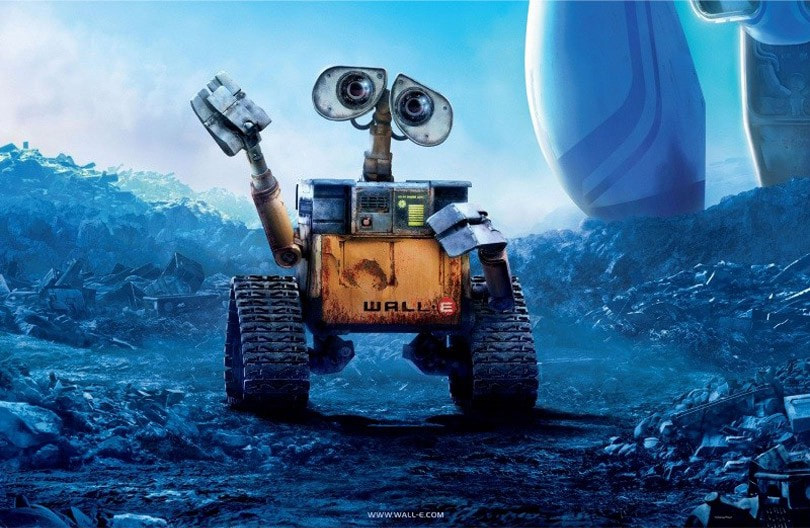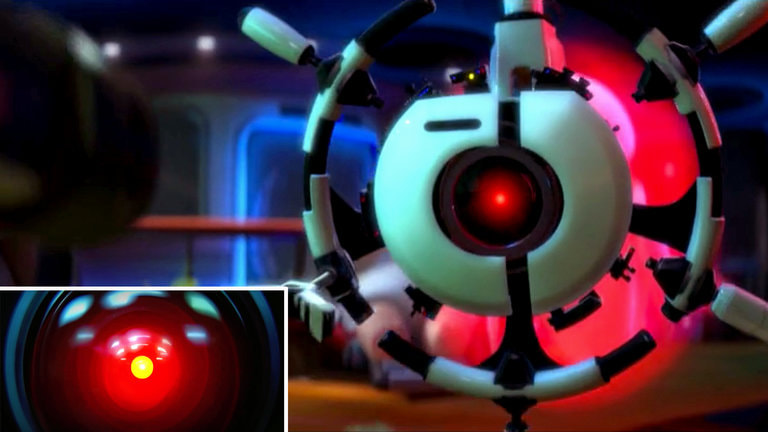 Artificial intelligence has been growing in popularity over the last few years. It feels like no matter where you turn, there's something with AI built into it. There's a big debate over artificial intelligence, with some people being worried that we might take things too far and create machines that can think freely beyond our commands. However, it clearly has some uses, particularly in the garment manufacturing industry. If you own a manufacturing factory, then you may be thinking about using artificial intelligence as part of your process. So far, there are no machines specifically designed with "Artificial Intelligence" built into them. There are no machines with a "Siri" or "Alexa" that will cut your machines for you, but there are a lot of great tools that have automations built in that can help you prepare for the future, and make your operation run way more smoothly! So, what are the pros and cons of this? Pro: It frees up people from mundane tasks. Your employees will doubtless have many jobs that they hate doing. They're boring, they take a long time, and it causes your employee's attention spans to waiver. The beauty of artificial intelligence is that it implements automation into the manufacturing process. Instead of a task taking half an hour, technology can do it in an instant. There's no need for your workers to force themselves through loads of mundane tasks as the AI can do it all for them. As a result, it gives your workers more time to focus on tasks that demand more creativity. This could potentially make them happier, raising employee satisfaction rates. Go here to see Automated Cutting Machines that can help cut down on repetitive tasks and speed up your operation. Go here to see Automatic Folding Machines that will save you from having to have a person that has to fold all of your newly cut garments. Pro: Faster decision making. AI technology brings more speed to your garment manufacturing business. It can be utilized at different stages of the manufacturing process to make quicker decisions. Whether it is in a cutting machine that needs exact precision, over and over again, or in a folding machine that is folding all the garments that have been manufactured. Once that decision has been made on the precision of the cut, or the type of fold, it is done! The technology figures out what needs to be done, and does it. This all takes a split second, rather than having a human physically try and figure things out. As a consequence, actions are performed faster than ever before, speeding up the whole process. This applies to using automated machinery as well. You can preprogram settings, and they will run with it every time! Pro: Personnel risk removal. Artificial intelligence removes the risks associated with your personnel. In essence, it gets rid of human errors. As humans, we're all guilty of making mistakes. One employee might be tired and miss something that completely ruins the manufacturing process and ends up costing you loads of money. AI doesn't make mistakes; it won't produce the same human errors. Ironically, the only time that AI doesn't work is when a human hasn't programmed it correctly! Go here to read more about tools that can reduce the rate of injury for you and your employees! Pro: Consistent and Accurate. As you start to implement Artificial intelligence, it will run with what you program. Your machine won't have a bad day. It will never be hung over. Depressed. It will do it's task accurately and consistently. The machine that can implement this best in the garment manufacturing space are automatic cutting machines. You can program the cuts, and it will run it over and over again. To take a look at automatic cutting machines, go here. Con: Bad calls can be made worse
There are some downsides to artificial intelligence, and the main one is that it can make bad calls. This isn't a mistake as sorts, mainly because your AI is doing what it's programmed and thinks it's making the right decision. There's an example of this, but not from the manufacturing industry. A few years ago, there was a terrorist attack in Australia that led to hundreds of people trying to flee the scene as fast as possible. Their immediate reaction was to call Uber and book transport. The problem is that Uber uses artificial intelligence that recognizes when there's a spike in demand. When demand is high, prices go up - it's simple economics. But, the issue is that Uber ended up charging incredible fees for people fleeing a terrorist attack. It was seen as them taking advantage of the situation when really it was their AI making a bad call. That's the downside of bringing artificial intelligence into the manufacturing world; it's not aware of everything. AI can't sense things that it doesn't have access to. Imagine you start printing something offensive on a t-shirt, but you don't realize it. Your AI won't flag this up, it will just go through the normal process and print as many tees as you need. With a human, they can spot the offensive thing - or, say, an error - and stop the process before you waste loads of money manufacturing something that can't be sold. People working with machines will lead to the best results! Con: The initial cost can be high. The more automated the machine, the higher the cost can be. The more bells and whistles, it can add to your out the door bottom line. In the long run, you will more than recoup the costs in reduced labor and a higher output, but for those just getting started it can feel overwhelming! If you are looking to get more automation in your manufacturing process, and are not sure where to start. Or you just want to make sure that you get the right set up for you, give us a call! We help companies like you every day. We can see the things that matter the most to you, and show you the machines that meet your needs and your budget!
2 Comments
Michelle
5/30/2023 01:34:51 pm
Are you joking this is not AI. very misreading buzzy articles
Reply
Leave a Reply. |
Archives
January 2024
Categories |
- Home
-
Products
- Air Flotation Tables
- Automatic Folding Machines
- Automatic Stacking Equipment
- Automatic Strapping and Banding Machines
- Band Knife Machines
- Bias Cutting Systems
- Blind Cutting Tables
- Collarette Cutters
- Cuff, Collar and Placket Machines
- Cutting Equipment >
- Embroidery Machines
- Eton Systems
-
Feeders and Loaders
>
- Power Cradle
- Eastman Power Feeder - Sewn Products
- Power Feeder with HD 3-Roll Stand
- Vertical Carousel - Sewn Products
- Vertical Power Roll Feeders- Sewn Products
- A-Frame Roll Rack
- TFD Series
- Heavy Duty Roll Lifts
- Roll lift Jumbo- 70"
- Roll lift Low profile
- Roll lift standard
- Roll lift high rise
- Roll lift compact - 2
- Power Roll lift high rise
- Fusing and Heat Transfer Machines
- Label Pickers
- Measuring and Inspection Machines
- Needle Detection
- Paper
- Parts and Supplies >
- Phillocraft Spreading and Production Tables
- Plotters
- Pneumatic Lift Tables
- Production Tables - Phillocraft
- Quilting Machines
- Scissors, Snips and Shears >
- Sewing Machines
- Slitters
- Spreading Machines >
- Steam Press and Finishing
- Swatch Equipment
- Thread
- Thread Trimmers
- Ultrasonic Equipment >
- Upholstery Equipment
- Digitizer
- Used Equipment
- Webbing Cutter Machine >
- Tradeshows
- Service and Repair
- Manuals
- About Us
- Contact Us
- IDEAS
- Finance and Lease
- Sewn News
Copyright © 2024 Sewn Products Equipment Company
|
971 Airport Rd. | Jefferson, GA 30549
Local +706 367-2755 | Fax +706 367-4112 SewnProducts@SewnProducts.com |
- Home
-
Products
- Air Flotation Tables
- Automatic Folding Machines
- Automatic Stacking Equipment
- Automatic Strapping and Banding Machines
- Band Knife Machines
- Bias Cutting Systems
- Blind Cutting Tables
- Collarette Cutters
- Cuff, Collar and Placket Machines
- Cutting Equipment >
- Embroidery Machines
- Eton Systems
-
Feeders and Loaders
>
- Power Cradle
- Eastman Power Feeder - Sewn Products
- Power Feeder with HD 3-Roll Stand
- Vertical Carousel - Sewn Products
- Vertical Power Roll Feeders- Sewn Products
- A-Frame Roll Rack
- TFD Series
- Heavy Duty Roll Lifts
- Roll lift Jumbo- 70"
- Roll lift Low profile
- Roll lift standard
- Roll lift high rise
- Roll lift compact - 2
- Power Roll lift high rise
- Fusing and Heat Transfer Machines
- Label Pickers
- Measuring and Inspection Machines
- Needle Detection
- Paper
- Parts and Supplies >
- Phillocraft Spreading and Production Tables
- Plotters
- Pneumatic Lift Tables
- Production Tables - Phillocraft
- Quilting Machines
- Scissors, Snips and Shears >
- Sewing Machines
- Slitters
- Spreading Machines >
- Steam Press and Finishing
- Swatch Equipment
- Thread
- Thread Trimmers
- Ultrasonic Equipment >
- Upholstery Equipment
- Digitizer
- Used Equipment
- Webbing Cutter Machine >
- Tradeshows
- Service and Repair
- Manuals
- About Us
- Contact Us
- IDEAS
- Finance and Lease
- Sewn News


 RSS Feed
RSS Feed